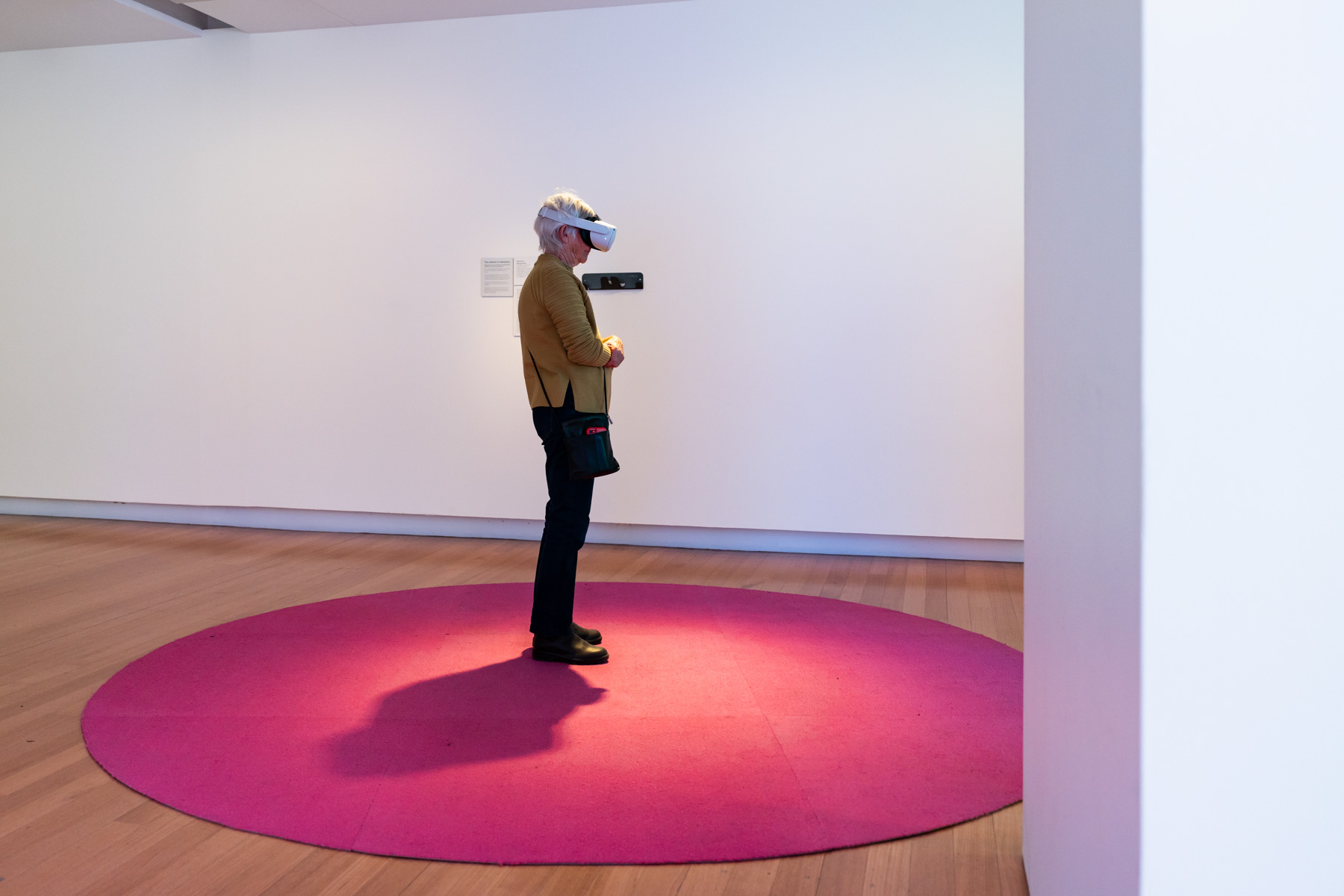
Image: Tully ARNOT Epiphytes (installation view) 2022, VR installation, sound, scent. Courtesy of the artist. Creative and technical production by Dr Josh Harle of Tactical Space Lab, with contributions from Monica Gagliano, Umashankar Manthravadi and Thomas Tajo. 'Epiphytes' is the third Mordant Family VR Commission, a partnership between ACMI and the Mordant Family. It has been supported by the City of Melbourne.
This audio description has been developed by the artist, Tully Arnot, who also works developing Audio Description for other cultural organisations. It is designed as a preamble before the experience, as the Virtual Reality (VR) includes a lot of audio that could compete with an audio description. Alongside this Audio Description the artist also encourages you to stop for a few calm breaths before engaging in the VR itself.
The VR occupies a 3-metre diameter circle, with a pink carpet on the floor to help audiences feel their place in the environment. Upon wearing the VR headset and as we enter the VR, an unseen voice introduces us to this space. We breathe together, and on an exhalation our eyes close for us — like theatre curtains shutting off the view. Black slowly fades to dark red, like light penetrating eyelids on a sunny day. As the narrator starts to describe the space, the natural environment slowly becomes visible as a reddish gradient of blurry trees and shapes around us.
The environment is soft, diffuse, shifting between a limited gradient- reds to pinks, oranges, blues, purple, magenta, grey. The contrast sometimes lessens, highlights no longer stand out, the forms appear as flat colour fields. Particles of dust float through the air. Shadows from an unseen canopy dance on the uneven ground. Bubbling nodes of brighter light appear at times, if we move closer, we discover these are sounds — voices. At times, the colour is consuming, a red shifts our perception of brown, making it look green, or purple similarly shifts grey to green – the imagined tone of a natural environment. Highlights and shadows invert. Our sense of perception is challenged. It can feel disorientating. Towards the end the colours all shift to pinky magenta — the opposite of green, the colour absorbed by plants. Ending with a minute of full magenta, the experience adjusts our visual perception afterwards.
When we take off the Virtual Reality headset, this residue affects our perception for another minute. When we walk back into the museum space — things appear a little greener than before. The Virtual Reality allows for audiences to free roam and create their own experience of the space, moving between sounds. It was originally built for an 8-metre diameter circle, so the 3-metre version you will experience here is more densely packed. A staff member will be nearby at the front desk reception. Please feel free to talk with them if you have further questions.
If you get too close to the edge of the carpet, you will hear a muffled underwater sound. If this happens, please move back into the centre of the circle. In this work you will encounter the feminine voice of evolutionary ecologist Monica Gagliano recorded in the Northern Rivers, an older masculine voice from acoustic archaeologist Umashankar Manthravadi with tiny, delightful street sounds seeping in from Bengaluru, and the calm yet excitable voice of blind theorist and echolocation teacher Thomas Tajo, which retains some zoom call acoustic qualities — an artefact from the period the work was made in.
Epiphytes is a multi-sensory virtual reality project exploring plant communication, posthumanism and alternate forms of perception. An abstracted representation of the artist's childhood backyard, the virtual environment features a diffused, shifting, magenta palette, suggestive of a phytomorphic (plant-based) interpretation of light and space. The work includes its own signature scent, developed by the artist and audio of interviews that are spatially arranged within the 3D environment, encouraging curiosity and exploration of the space, while generating a collaged conversational dialogue between these diverse theorists and as a creative means to consolidate the artist’s research and our collective feelings of solastalgia, of a despair felt through the climate crisis unfolding around us now.

